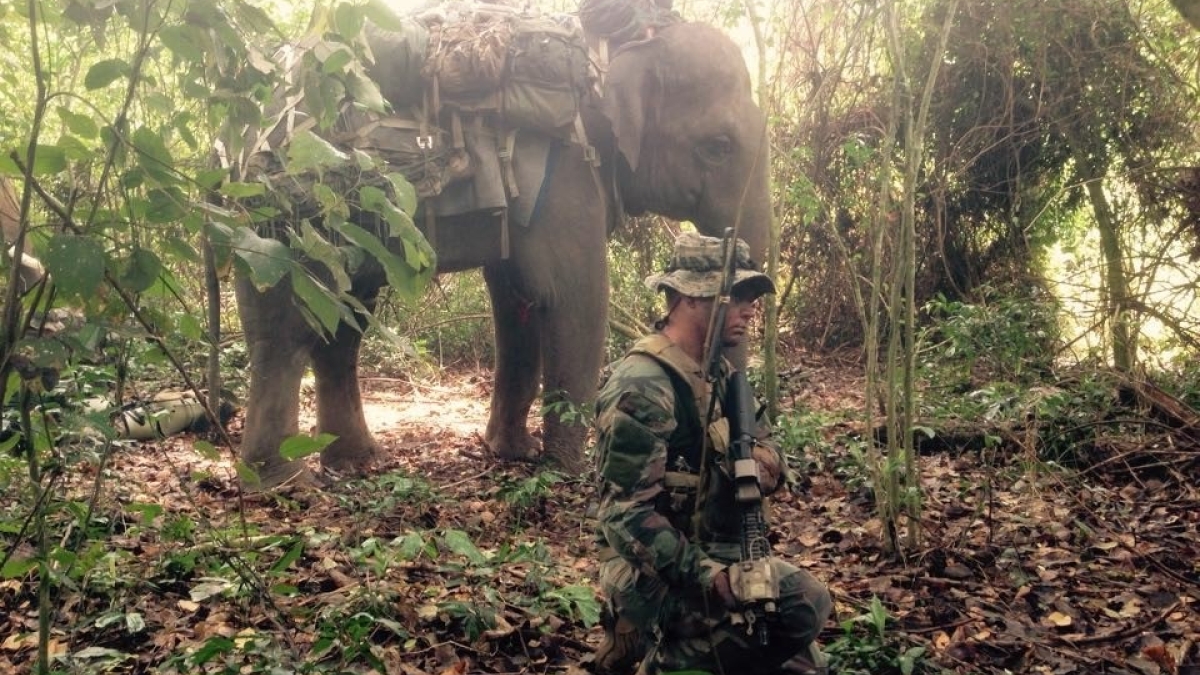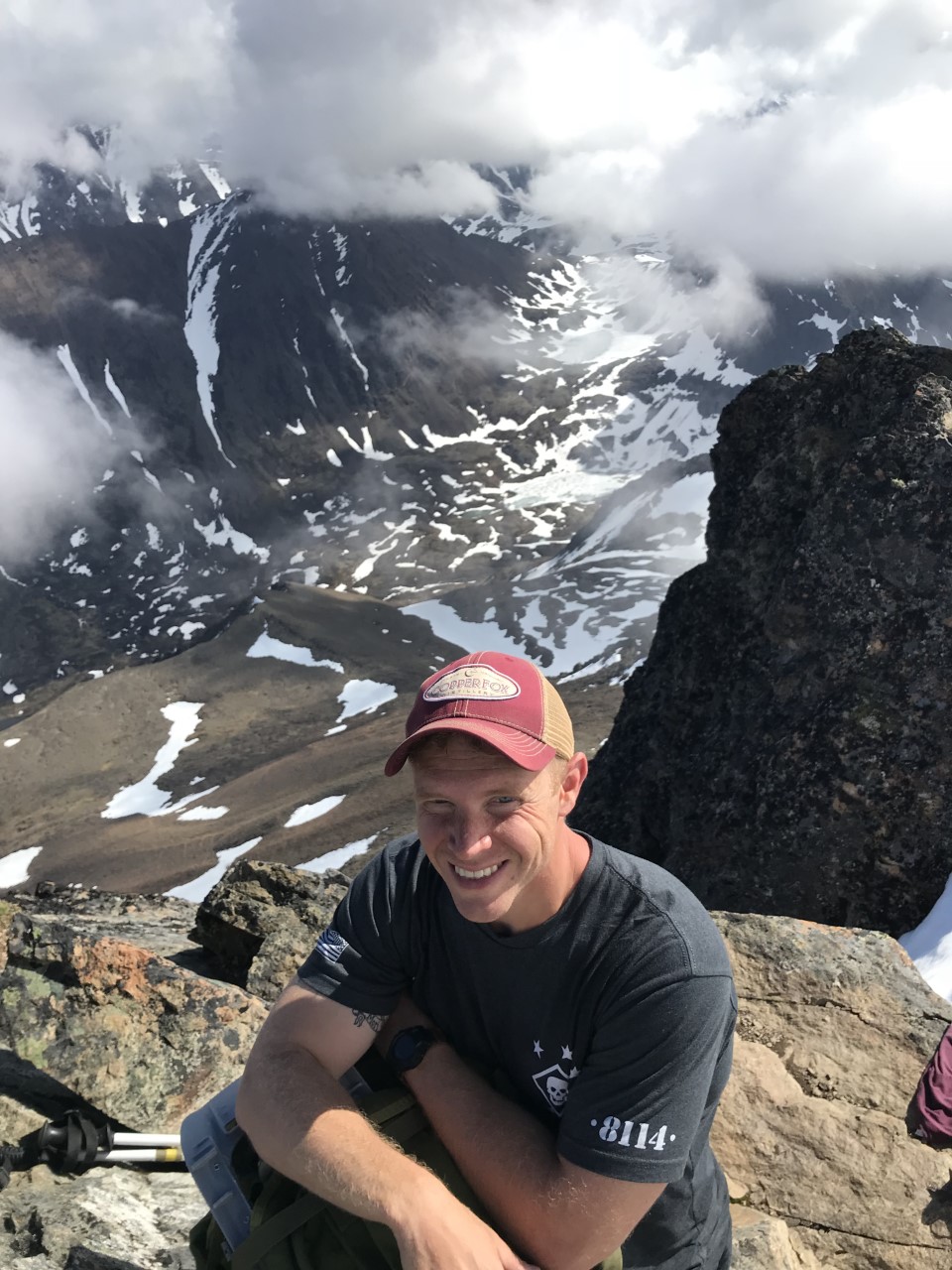Editor's note: This story is part of our Salute to Service coverage, Nov. 1–11. Learn about the schedule of events.
What do you want to be when you grow up?
For many, the answer to that question changes as the years pass. Interests shift, priorities change, other paths start to sound more lucrative or appealing. For Nick Heier, a master’s student in Arizona State University's College of Global Futures, the answer to that question never changed.
“I was always going to serve in the military,” he said. “As a kid, if you asked me what I wanted to be when I grew up, I’d have told you: soldier.”
Hearing stories of relatives that had served and watching news clips about Operation Desert Storm from a young age influenced his choice to enroll in the U.S. Air Force Academy after high school.
Then the Twin Towers fell. Plans changed.
Instead of heading off to the Air Force Academy, Heier enlisted in the Marine Corps as a combat engineer. This was the start of a 20-year military career that eventually led him to ASU, where he is due to graduate in December with two master’s degrees — one in biomimicry, and one in construction management and technology — that will enable him to pursue a new career path.
“After I returned from my last deployment, a degree in hand, I started thinking about what I wanted to do in my next chapter. And that was challenging. There was a lot of self-reflection and soul-searching. I had spent the first two decades of my life certain about what I would do with the next two decades, almost 40 years with one sense of identity,”
In addition to being a U.S. Marine Corps veteran and a dedicated student, Heier is a compelling storyteller. Here, he shares more about his story.
Question: What led you to join the U.S. military?
Answer: My grandmother kept a box of my grandfather’s after he passed. It contained some photos and medals and other military trinkets, including a few relics from his father. Both my grandfather and his father had served in their respective world wars. My grandmother on the other side lost her brother in the Korean War, and many of my friends had family members who served. I remember seeing news clips of Operation Desert Storm in kindergarten and knowing that I needed to serve someday, too.
By the end of high school, I was headed to the U.S. Air Force Academy. Then the Twin Towers came down on 9/11. A handful of us on the football team convinced each other to enlist. We found ourselves in the Marine Corps recruiter’s office in Hatboro-Horsham, Pennsylvania, because, of course, the Marines were said to be the toughest. Instead of going to USAFA and Colorado Springs in the fall, I was on the yellow footprints at Parris Island just three days after graduation.
Photo courtesy Nick Heier
Q: Tell us about your time in service.
A: I ended up a combat engineer. Spent my first enlistment in Japan and came back married to an Aussie. We now have four kids and are celebrating our 16th year of marriage. I deployed to Operation Iraqi Freedom out of 1st Combat Engineer Battalion. Then I went to Assessment and Selection in 2009, which was when the Marine Corps Forces Special Operations Command, or MARSOC, first opened to Marines of any occupational field. I spent most of my time serving in 1st Marine Raider Battalion (then 1st Marine Special Operations Battalion) out on the West Coast at Camp Pendleton. I deployed to The Helmand in Operation Enduring Freedom – Afghanistan, spent some time in Herat, too, then off to Operation Pacific Eagle – Philippines, and just about everywhere else throughout Southeast Asia. I finished my career at Special Operations Command – North in Colorado Springs.
Q: How did your service influence your decision to come to ASU and pursue biomimicry research?
A: I originally enrolled in undergrad from a SPAWARE tent in Fallujah. SPAWARE was the name of the company contracted to provide internet services to our outposts and bases. I finally graduated from Colorado State University with a Bachelor of Science in business some 11 years later, submitting my final papers from a concrete hut in the jungles of Mindanao. After I returned from my last deployment, a degree in hand, I started thinking about what I wanted to do in my next chapter. And that was challenging. There was a lot of self-reflection and soul-searching. I had spent the first two decades of my life certain about what I would do with the next two decades, almost forty years with one sense of identity. I even wore the same haircut for most of that time.
I eventually settled on building as something that I wanted to do. There’s a connection there. I grew up in and around Philadelphia, raised by my grandmother. She was an Irish immigrant and a railway engineer for the Southeastern Pennsylvania Transit Authority. Her husband had been a surveyor. My whole family is builders — architects, engineers, surveyors and contractors. My uncles still operate their concrete company in Warminster. My first jobs were mixing wheel barrels of cement and busting forms on-site with them. I even took part-time work in construction when I came out to Colorado, just because I enjoyed the work.
I just wasn’t sure what exactly I wanted to build if I was going to be building for the next 20 years or so. That’s where biomimicry comes in. Through my soul searching, I found resolve in nature and nature-centered design. Given keywords like nature, environment, biology, building, construction, engineering, master’s program, online and veteran-friendly, every algorithm in the universe would have led me to biomimicry and ASU.
Q: How has your perspective/experience of the world been shaped by your service?
A: There’s this element in biomimicry that is reconnecting with nature, becoming inspired by nature and learning from nature. That was catching, and it spoke to this ethos I have formed. Some of the reasons we see such discord in our lives are because we have become so disconnected from nature. Maybe we even forgot our human nature.
I think that’s part of why I spent so much of my life before, in the military, doing words that start with the letter D: defend, degrade, delay, deny, disrupt, destroy and so forth. I think, too, that’s part of why my kids fret about school shootings and life in the Anthropocene, and why my family and friends and countrypeople were at each other’s throats during COVID and the 2020 election. We lack connection.
So that’s what I want to do from now on. I’m going to build places that enhance our connections with ourselves, each other and our environment. To get there, I specifically sought out these two master’s programs at ASU, and I’ll graduate in December with Master of Science degrees in biomimicry, and construction management and technology. My thesis compared analytics for ecology and evolutionary systems to innovation systems for the cement and concrete industry.
More Environment and sustainability

Driving green desalination
Wilderness survival TV show hosts, pirates and water treatment researchers agree on one thing: Most natural water sources are not…

ASU preservation facility serves as test bed for rooftop heat mitigation
A roof coating that uses thermal energy storage materials from Arizona State University spinout EnKoat is halting the heat in…

ASU Carbon Summit displays sustainability leadership, collaboration and ... electric motorcycles
This month, a student-led initiative brought government officials, entrepreneurs and nongovernmental organizations under one roof…

